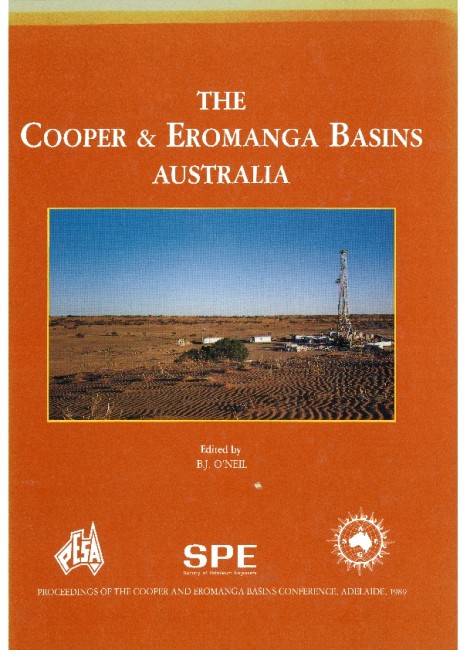Publication Name: The Cooper & Eromanga Basins Australia
Authors: P.J. Hawkins, C.S. Almond, D.C. Carmichael, R.J. Smith and L.J. Williams
Date Published: June 1989
Number of Pages: 31
Reference Type: Book Section
Abstract:
Source-rock richness, dominant kerogen types, levels of organic maturation and thermal histories have been used to highlight differences in potential Jurassic source rocks ('basal Jurassic' unit, Birkhead Formation and Westbourne Formation) east of the Canaway Fault with those west of the Fault where all oil discoveries have been made to date. Regional trends have been delineated and liptinite (exinite) rich source rocks identified.East of the Canaway Fault, Jurassic units are characterised by generally low levels of organic richness, high inertinite content, and small areas rich in liptinite. West of the Fault are large areas rich in an organic matter which comprise significant proportions of liptinite. The 'basal Jurassic' unit and Birkhead Formation are considered major sources for oil found in Jurassic reservoirs. The identification of araucariacean chemical biomarker signatures provides evidence for a Jurassic source for some oils.
Regional thermal maturation trends highlight a lack of maturity for oil generation at all stratigraphic levels east of the Canaway Fault. West of the Fault, large areas of all three Jurassic units have achieved maturity levels for peak oil generation to take place.
The principal areas for oil generation in Jurassic rocks occur over the southern limits of the Thompson Syncline,
the south-eastern region of the Cooper Syncline and, to a lesser extent, the northern limits of the Nappamerri
Trough. The main phase of expulsion and migration probably took place during the Late Cretaceous to Early
Tertiary, such that Late Cretaceous to Early Tertiary structures could have been filled with oil. Structures
resulting from Mid Tertiary deformation are unlikely to be fully charged with oil because they post-date the main
phase of migration. Groundwater movement is unlikely to have had much influence on oil migration paths during
the Early Tertiary, but is probably exerting control over current migration.


